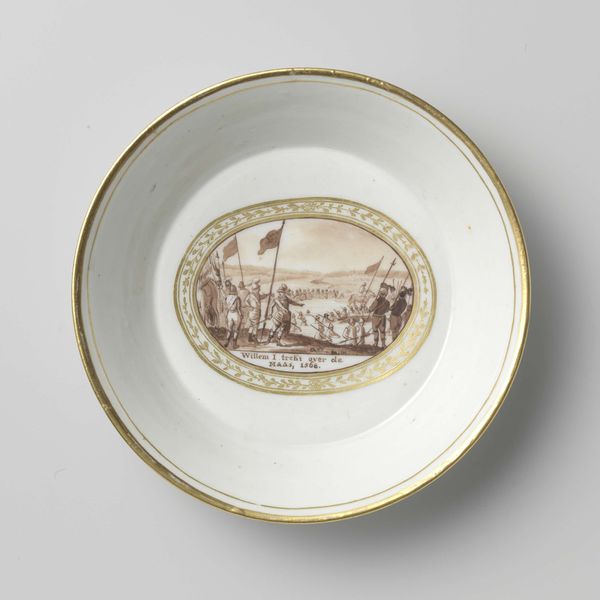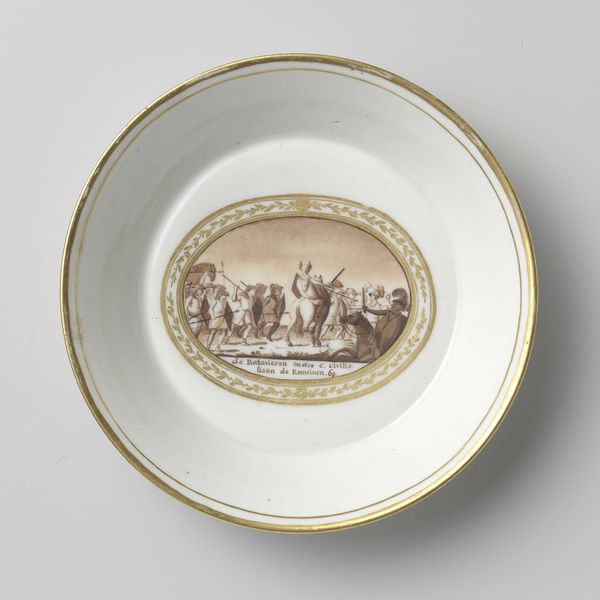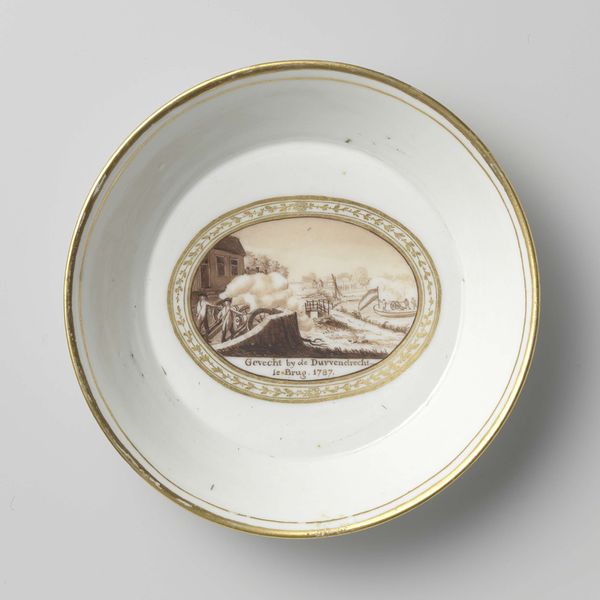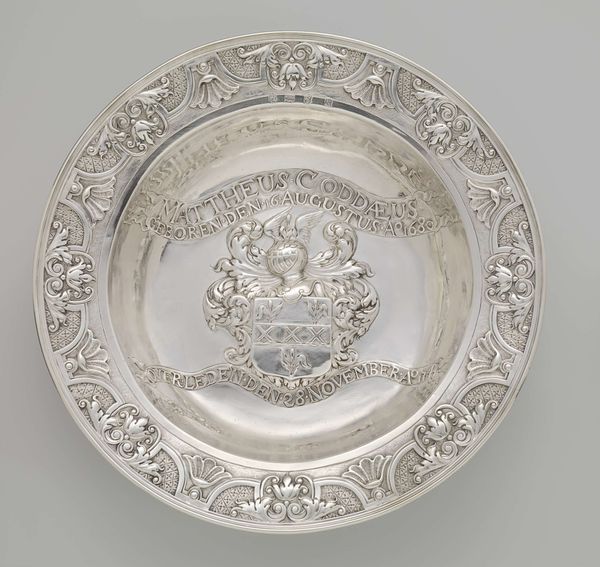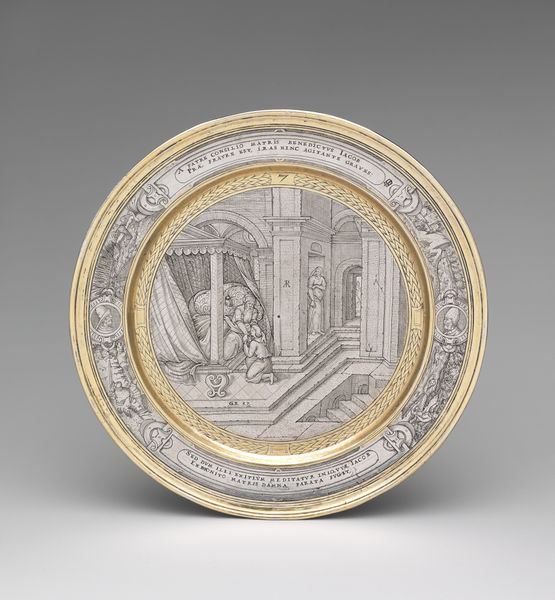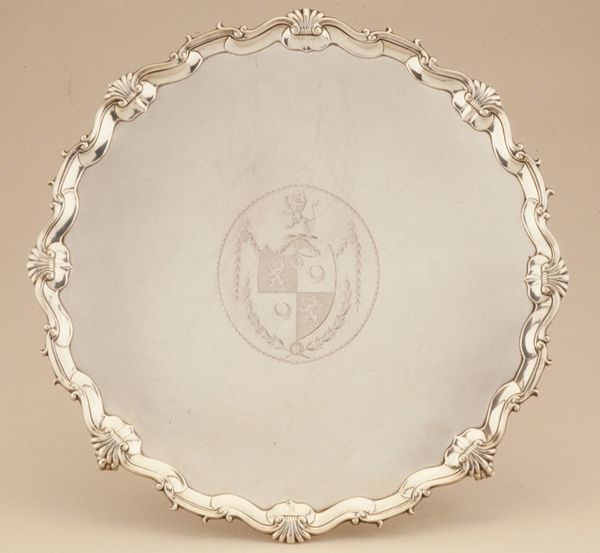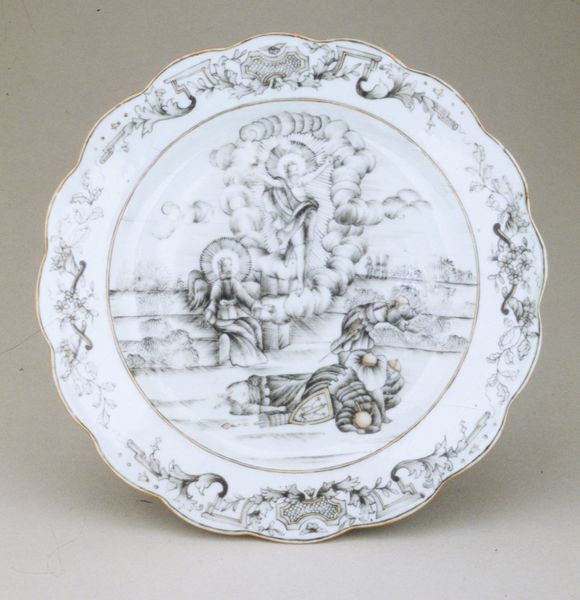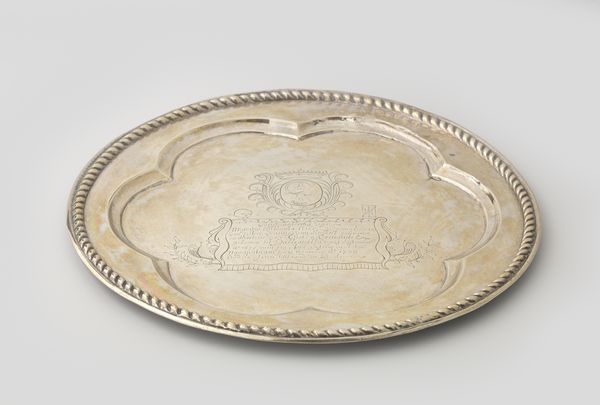
silver, metal, engraving
#
silver
#
allegory
#
baroque
#
metal
#
ceramic
#
engraving
Dimensions: height 1.0 cm, diameter 33.5 cm, diameter 26.5 cm, weight 629.5 gr
Copyright: Rijks Museum: Open Domain
Editor: Here we have a piece called "Salver," or "Piring" in another language, made of silver and dated 1714. From what I can tell, it looks like an engraved commemorative plate. There's a distinct allegorical scene in the center that evokes a mood of somber remembrance. What story do you think it tells? Curator: It's a fascinating piece when you consider its place in 18th-century social practices. Plates like this weren’t merely decorative; they served a public function, solidifying social standing and commemorating significant life events, in this case, probably a death. Notice the allegorical scene depicting mortality with figures such as angels, cherubs, or the grim reaper surrounding a deceased person; this symbolism touches on societal views of life, death, and legacy at the time. Why do you think it was created using silver? Editor: That's an interesting question! Maybe silver, beyond its value, held a symbolic weight reflecting purity or remembrance during that era? How did these kinds of pieces function in relation to broader social norms or even political power? Curator: Precisely! Silver's intrinsic value made it an ideal material for projecting power and status. The display of wealth, often achieved through pieces such as this, could have influenced perception. More broadly, you must also examine this salver in relation to socio-political narratives. Commemorative objects frequently mirrored values upheld by institutions or social classes; that engraving could reinforce notions about morality or familial lineage favored in specific social strata at the time. Is there a phrase on it? Editor: It does appear to be inscribed, yes. Viewing this salver has helped me to start considering material objects less as "silent observers" but instead understanding their role within these powerful conversations between social classes. Curator: Absolutely, looking closer can give us the perspective to challenge those narratives.
Comments
rijksmuseum about 2 years ago
⋮
The family of Cornelis Chastelein, a member of the Council of the Indies, had this silver salver made in his memory. Such trays were used to serve drinks; piring is the Malaysian word for tray or dish.
Join the conversation
Join millions of artists and users on Artera today and experience the ultimate creative platform.

